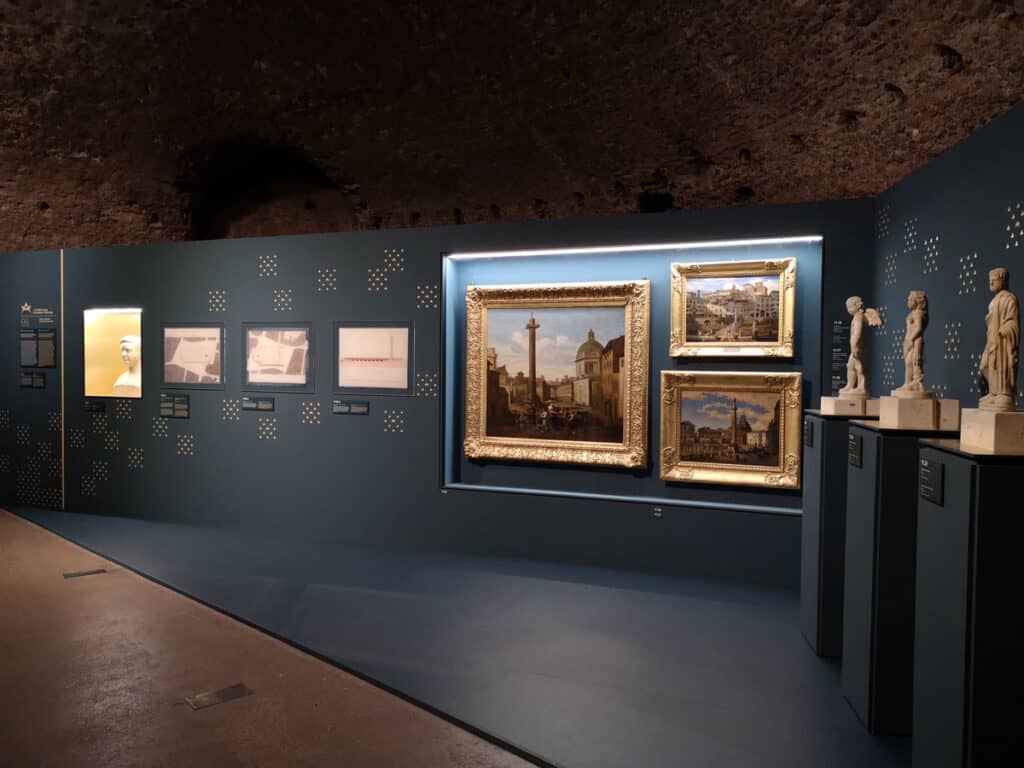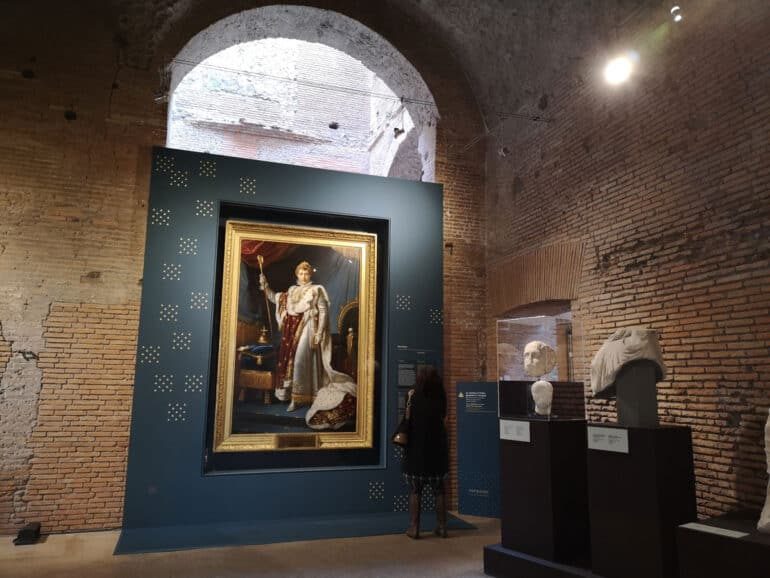Three different macro sections with a total of 15 subtopics to pay tribute to Napoleon Bonaparte
On the 200th anniversary since his death, the Mercati di Traiano pays tribute to Napoleon Bonaparte with the exhibition “Napoleon and the Myth of Rome”, open to the public till November 7th. While Napoleon himself never came to Rome, the numerous pieces of art and work on exhibit at the Trajan Market’s Museum of the Imperial Fora provide a rather impactful aura that his powerful presence was here. The exhibition itself is divided into three different macro sections with a total of 15 subtopics for the organization of the pieces displayed.
The vast subtopics include: Napoleon Between Alexander The Great and Caesar, Attaining of Imperial Dignity, Beyond Napoleon: A Saint, A God to be Prayed To, Napoleon King of Italy, Dreaming of Rome, The Crown and The Tiara, Work Around Trajan’s Column, From the Alps to the Pyramids, Conquest and Knowledge, After Egypt, and lastly, In the Spirit of Trajan.

The exhibition opens with a display of an expansive timeline of Napoleon’s life, featuring major events that occurred throughout, starting at his birth in Ajaccio, France in 1979. Walking into the second room of the exhibition, you are overwhelmed with a rather powerful, massive oil canvas portrait of Napoleon himself titled “Bonaparte crossed the Great Bernard Pass”. The colossal portrait’s vibrant oil colors command the room, immediately catching your eye.
Napoleon often found himself between two of the most influential people in his life, Alexander the Great and Julius Caesar, each depicted within the exhibition through sculptures and portraits of the two powerful forces. Napoleon’s need for domination and power is on full display through the way in which he is illustrated in art with symbols of victory and strength. For example, the usage of the laurel wreath makes a recurring appearance on Napoleon’s head as it was awarded to victorious generals.
The flow of the exhibition continues with the second macro section, depicting Napoleon’s relationship with Rome and Italy begins with an oil on canvas portrait created in 1812 titled, “Julius Caesar Dictates the Commentaries”, which captures the planning of the imperial residence in Rome intended to accommodate Napoleon and his family. While Napoleon never actually made it to Rome, the artist’s stylistic choice to have Caesar’s face almost replicate that of Napoleon draws back to his desire to be seen as worthy among his inspirations. The theme of depicting Napoleon in a heroic sense is further carried as you walk throughout the rest of the exhibition, illustrated through various sculptures and pencil sketches of Napoleon with the laurel crown as well as an incredibly detailed pencil drawing of Napoleon comforting plague victims.

The last macro room focuses on Ancient Models in Napoleonic Art and Epic. Napoleon had many expeditions and one of his conquests to Egypt is featured in the last section of the exhibition. The exhibition concludes in classic Napoleon style, with a gargantuan portrait of himself dressed in his coronation clothes. The symbolic meanings within this painting are immense, from the laurel leaves to the bees in which he chose as his emblem. The exhibition is extensive and magnificent, all not to be forgotten, like Napoleon Bonaparte himself.
NAPOLEONE E IL MITO DI ROMA
TILL 30 MAY 2021
Opening Times
Everyday 9.30am-7.30pm
Tickets
Mercati di Traiano – Museo dei Fori Imperiali + Exhibition €13-15



